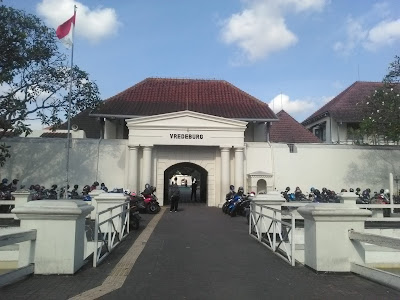Research Instruments
Activity 1:
1. What is meant by a “research instrument”?
Answer: Research instrument is used to refer to the data collection tools.
2. Mention the five types of research instruments, and specify the use of each!
Answer: Five types of research instruments:
a. The questionnaire: It is widely used as a means of collecting data, especially when the data will be collected in the form of ideas, opinions, or personal experience of a group of people.
b. Observation sheet: The data collected through observations can be recorded in the observation prepared in advance with or without a specific format.
c. Interview sheet: Like observation sheet, interview sheets can be prepared with or without certain formats.
d. Test: It is done to know about a person’s ability that can be given in the oral, written, or performance forms
e. Document: It is a data source that you can find some data about what you want.
Activity 2:
1. What is a questionnaire?
Answer: Questionnaire is widely used as a means of collecting data, especially when the data will be collected in the form of ideas, opinions, or personal experience of a group of people.
2. How is a questionnaire similar to and different from an interview?
Answer: Questionnaires and interviews are used by researchers to convert into data the information directly given by a person (subject). It is a way of getting data about person by asking rather than by watching them behaves or by sampling a bit of their behavior. Questionnaire must be prepared with certain format; whereas interviews can be prepared with or without certain format.
3. What kinds of data can be gathered by using a questionnaire or interview?
Answer: By providing access to what is “inside a person’s head”, these approaches make it possible to measure what a person knows (knowledge or information), what a person likes and dislikes (values and preferences), and what a person thinks (attitudes and beliefs). It also can be used discover what experiences have taken place (biography) and what is occurring at the present.
4. Describe each one of the five question formats.
Answer: The five question formats:
a. Direct Versus Indirect Questions: The difference between direct and indirect questions lies in how obvious the question is in soliciting a specific piece of information.
b. Specific Versus Nonspecific Questions: One form of question deals very specifically with an object, person, or idea toward which an attitude, belief, or concept is being solicited, for example, an attitude toward a specific painting.
c. Fact Versus Opinion: A factual question would ask the respondent for the type of car owned or for marital status. The opinion question would ask about preference for Fords, or Chevrolets or reasons why (or why not) the respondent thinks marriage contributes to a meaningful relationship between a man and a woman.
d. Questions versus Statements: On many topics, the interviewer can either ask a respondent a direct question or can provide the respondent with a statement and ask whether he or she agrees or disagrees (or whether he or she thinks it is true or false).
e. Predetermined Versus Response-Keyed questions: Some questionnaires require the respondent to complete every item. Others are designed so that subsequent question may or may not be answered, depending upon the response to a keyed question.
5. What is meant by unstructured response?
Answer: It is commonly called the open ended question (although it is the response that is open ended and not the question), allows the subject to give his or her own response in whatever form chosen.
6. Mention the six structured response modes, and describe each!
Answer: Six structured response modes:
a. Fill-in Response: It can be considered the transitional mode between unstructured and structured forms. Although it requires that the individual generate rather than chose a response
b. Tabular Response: It is like a fill-in although somewhat more structured because respondents must fit their responses into a table.
c. Scaled Response: A commonly used structured mode is that of a scale (that is a series of gradations) on which respondents are asked to express endorsement or rejection of an attitude statement or to describe some aspect of themselves.
d. Ranking Response: If a researcher gives a respondent a series of statements and asks the respondent to rank order them in terms of a particular criterion, researcher will obtain results in terms of ordinal position (that is the ordinal measurement)
e. Checklist Response: In a checklist item the respondent replies by selecting one of the possible choices offered. This form of response does not represent a scale because the answer does not represent points on a continuum; rather they are nominal categories.
f. Categorical Response: It is similar to the checklist but simpler, offers the respondent only two responses for each item
References:
1. Brown, J.D. 1988. Understanding Research in Language Learning. Cambridge: CUP.
2. Nunan, D. 1989. Research Methods in Language Learning. Cambridge: CUP.
3. Saleh, M. 2001. Pengantar Praktik Penelitian Pengajaran Bahasa. Semarang: IKIP Semarang Press.
4. Tuckman, B.W. 1978. Conducting Educational Research. London: Harcourt Brace Jacobovitz.
Baca Juga:























